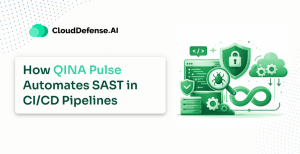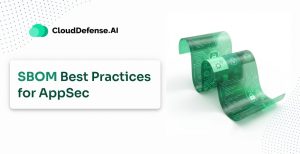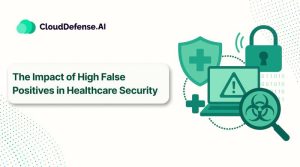Apps are no longer exclusive tools for the tech-oriented or geekier industries. It’s more crucial than ever that you have an app for your business, regardless of whether you have a heavy online presence or not.
Apps allow your customers to connect with you or make purchases on the go, and provide additional features and functions for your business’s operations, marketing strategies, customer retention, and more.
This is doubly true since mobile apps are becoming more and more ubiquitous across every industry. Most smartphone users spend the majority of their time on their devices on applications of some kind or another.
If you want your business to do as well as it can, you need an app. But developing an excellent app will be tricky if you don’t know what you’re doing.
Let’s break down the application development cycle so you know what to expect, what to budget for, and so you know how to go about creating a wonderful app for your business without making mistakes.
What Are the Five Stages of the Application Development Life Cycle?
App development is an ongoing process of idea generation, prototyping, development, and deployment. But the stages of app development – from its earliest idea or iteration to a full launch on supported app stores – can be broadly broken down into five major steps.
Discovery, Market Research, and Planning
The first stage of app development can be broken into three subsidiary steps: discovery, market research, and planning.
Discovery is the most organic of all of these – think of it as stumbling upon a need or problem you have to solve with an app.
You discover the issue that can be solved by developing or upgrading an app, so you start a plan to carry out that idea.
Discovery Process
You can alternatively begin the discovery process if you already have a few great mobile app ideas for your business in the proverbial bank. Regardless, every app’s development starts with a single core concept or need.
But an idea alone is not good enough to make an excellent app, especially for your own business. Next, you’ll need to do some market research – your app idea might be exceptional, but you’ll need to determine if there’s a market for it or if such an app will help your operations.
Don’t forget that security in each stage is crucial, taking care of your startup’s safety will make the foundation of your business.
If not, the app may not be worth the cost in terms of time or dollars it takes to complete development.
To perform adequate market research, you need to ask questions like:
- Who is the target audience?
- What purpose does the absolve?
- What language will be app be in?
- What are your competitors doing?
- What’s the overall budget for the app’s development, and the timeline?
- How can you market or promote this app?
Planning Phase
If you answer all of those questions and come up with satisfactory answers (for instance, you find that there is a market for your app idea and a workable budget in your business account), then you can begin planning.
This involves coming up with answers to some of the hard questions above. Come up with a budget, and a timeline, and determine who will work on the app. Is it going to be you, or an IT team that works for your company? Maybe it’ll be a freelancer – if so, you’ll need to work out communication plans, as well.
You’ll also want to come up with the core features or functions of the app so you don’t overdevelop. Your budget is likely limited to some extent. Planning out everything that the app will include or do will help you avoid wasting money later down the road.
By the end of this stage in the app development cycle, you’ll have an idea, a sense of how the app will perform or how you’ll market it, and an outline for its development.
Design and Wireframing
Now you can move on to the next phase of the app development cycle. To start with design, go back to the answers to the big questions asked before, like who the app will be for and what services it will provide.
You can use those answers to come up with a general design for the app. For instance, if your app is designed to work as a mobile store for your business, you’ll need e-commerce functionality, plus a few different payment methods for your customers.
You’ll also need to move on to “wireframing”. Wireframing is app development lingo for building a clear picture of your ideas and showing how the different features or functions of the app will combine into a functional interface.
Think of this as storyboarding or road mapping the development of the upcoming application.
To wireframe, you or others in your development team can come up with a sketch on paper or software of the app and what it’ll look like. Keep in mind that you want to:
- Emphasize the user experience above most other factors
- Place your brand anywhere that it’s appropriate
- Remember that you’re developing a mobile app instead of a website, which requires different solutions or strategies
The backend of the App
As you wireframe, you’ll also need to figure out the backend of your app. This is all the stuff that you and your team will interface with regularly to control the app and handle customer issues.
Choose the backend structures that you use to support your app in terms of servers, data integration, push notification services, and more.
Wireframing during this stage of the app development process is useful since you can adjust the frame if you run into limitations or budget issues.
Eventually, however, you’ll need to finalize your wireframe and come up with a prototype.
A prototype is the first version of an app’s idea in workable form. It’s not something you’ll present to your customers or users, but it should be at least mostly functional and give you and your team a base version to spring off for further development.
Build the prototype of your app using the wireframe you constructed before. Then, once the app is functional, have a few people from outside your development team test it.
They can provide valuable and actionable feedback about the app, how it feels, and any pain points you need to get rid of during the full development application cycle.
Development
Once your prototype is satisfactory, you should have a laundry list of different things you’ll need to develop or change about the app’s basic design.
This is the development part of the app-building process.
Developing an app involves completing a handful of complex steps. You’ll need to:
- Set up storage solutions and databases
- Set up servers for the backend of your app
- Come up with developer accounts for app stores for easy distribution
- Program and code the app – by yourself or hire developers depending on your skillset
- Create the “skins” or screens for your app, which should look similar to the storyboard-esque designs from your wireframing efforts
All of these phases will take some number of weeks or months to complete in full.
Furthermore, as you develop, you’ll want to make sure you don’t go over budget and code so that you hit all of the major functions and features you planned to include in the app during the earlier steps of the cycle.
If you do hire developers to do the coding and programming for you, remember to take your time finding the perfect worker, but don’t hesitate to fire them if things aren’t working out. “Hire slow, fire fast” is the name of the game when it comes to getting outside help, like a freelancer.
Testing (Quality Assurance)
The next step of the application development cycle is testing or quality assurance. Even if your app looks phenomenal when development is largely complete, you can’t be certain that it’ll work as advertised or that it will be a comfortable experience for your users unless you test it.
You should do a lot of testing yourself – break out your wireframe designs and earliest ideas and go through the different features you’ve included. If something was included, test it out and see how it measures up to your initial ideas about the function.
Furthermore, you should hire outside users to test the app or have employees in your company test the app as part of their job responsibilities. Ask questions about everything – ask how the UI feels, for instance, or whether the app responds fluidly to user inputs.
You’ll also want to test for other things like:
- How the graphics measure up over time, and how they impact current mobile device hardware
- If there’s enough cross-platform compatibility for various images (if applicable)
- If the update/bug fixing system is responsive – can you roll out updates or major bug fixes promptly if and when they are detected?
Spend plenty of time on the software testing process to maximize your app’s success and minimize the embarrassment you’d feel if you deployed something half-baked. Once testing is done, though, you can move on to the final and most enjoyable part of the app development process.
Deployment – The Final Stage of the Application Development Cycle
The fifth and last stage of the application development cycle is deployment. But you’ll need to prepare for launch if you want to guarantee success.
For instance, you’ll need to make sure your marketing team or department is involved so they can come up with a great marketing campaign or advertising plan.
This is the only way that your app will be quickly purchased or downloaded after being put in the various stores.
Marketing
Marketing should look into keyword research so you can optimize both the name of the app and its associated SEO text, like app descriptions, advertisements, and so on.
App store optimization, or ASO, is a separate but related focus to SEO: the former is crucial so your app doesn’t get buried underneath the hundreds of others that are likely launching during the same month.
Don’t forget that you should support and promote your app on your website if you have one. If not, it may be wise to build a landing page for that app specifically so users can find the app and be routed to a download page. Add news of your app’s launch to your social media or email campaigns, too.
Once all this is done and marketing is in full swing, you can finally launch your app when it’s good and ready. If done right, your app should have a handful (or even hundreds) of downloads right off the bat from eager users and customers.
Official Launch
Be sure to announce the official launch of your app everywhere you can, and consider paying some copywriters or bloggers to promote the app through reviews or announcement articles of their own.
Building momentum is key to having a successful launch. Furthermore, you must pay attention to the early reviews from your app’s first users. If they discover an issue with the app, you might have time to scramble your bug-fixing team and get rid of the problem before the majority of your users encounter it.
Either way, make sure you have a very clear channel for any feedback and that you respond to the earliest comments of your users.
Updates
Even after the initial launch of your app, you’ll need to maintain some staff on hand to handle any customer complaints and to roll out occasional fixes and updates.
Updates are larger changes to your app’s code or programming and should be undertaken after collecting a bunch of similar user feedback.
Upon collecting that feedback, you can restart the app development cycle again – come up with a solution for problems people are experiencing with your app, wireframe that solution, test it with a prototype version of the live app, then build in the fix and deploy it to live users.
As you can see, the application development cycle never really ends. But this also ensures that your app will be as effective and functional as possible!
To learn more about the System Development Life Cycle, or SDLC, check out our article “7 Phases of the System Development Life Cycle Guide.“
Conclusion
Ultimately, the app development cycle is easy to understand once you see it in full, even if you aren’t particularly IT-minded.
Business owners and developers alike can use this basic outline to streamline the app development process and make sure development deadlines are met. Use these five steps when building your app and you’ll have a much smoother experience. Good luck!







